Business Coaching
Common Business Challenges: How Can a Business Coach Help to Overcome
Struggling with business challenges?
 10 min read
10 min read
 18 August, 2025
18 August, 2025
We are a business, training, NLP consultants that drive results through the development of people, processes, and technology.
Creating businesses that are built around addressing a need serving clients ranging from startups to established MSMEs and large organizations.
Our coaching sessions, workshops, and strategic planning equips your team with the skills and knowledge to adapt and excel.
We are here to offer clarity, confidence, and a clear path that will easily take you towards your goals.
Our training programs blends engaging learning with interactive methodologies, ensuring that employees absorb knowledge and apply it in their roles.
Our NLP training courses will develop a progressive mindset, cultivate resilience, and will make you learn how to tackle challenges.
Access a wealth of information to help you learn more about our services. Check our gallery, video blocks, case studies!
By instilling a sense of accountability and autonomy, we create an environment where employees are entitled to take ownership and deliver outstanding results

Employee productivity is one of the critical challenges in today’s dynamic market conditions. High manpower attrition, high hiring & training cost is further deteriorating manpower productivity in both manufacturing as well as in service industry. We use our ‘Signature CRAFT model’ to transform employee productivity to desired level.
We initiate our assignment with Business Needs Diagnosis’ to discuss and understand results expected by our clients. We set quantifiable benchmark to initiate the project

The next step is to explore the skill sets required to perform the job with optimum productivity. We chunk down the job roles and categorise skillsets required to effectively perform each subtasks. We use proven methods like ‘ABC analysis and many more’ to arrange skills based on their importance to perform task

Assessing skills required against available human resources is the next significant task to improve employee productivity. We prepare skill matrixes against focus job roles to perform ‘People Talent Analysis’. We perform ‘Gap Analysis’ exercise to identify ‘Area of Improvements’ and direct accurate inputs to the right set employees.

We prepare and execute action plan to bring transformation from the mindset level by reengineering ‘Spiritual, Emotional and Functional Intelligences’ of focused employees. We use techniques like ‘Reframing, Rephrasing, Effective Review & coaching, profiling, Rewards & Recognition’ to boost employee productivity to desired level.

Regular review mechanism is set with the client to assess current results verses pre-set benchmark. We make adaptation in action plan based on changes in internal or external factors affecting the assignment. At the end of assignment period or on accomplishment of set benchmark, a detailed report is submitted to client.

Effectively minimizing growing pains by helping employees navigate complex processes, increasing visibility into work queues, preserving and organizing institutional knowledge, and reducing reliance on manual processes.
would recommend this program to a colleague
say they are better prepared for future responsibilities
say this program was worth the time & effort
As corporate training providers for the past 17+ years, we are committed to driving economic growth by empowering businesses through our expertise and experience. We equip businesses with the strategic insights and innovative solutions necessary to thrive in today's fierce market.
Startups are built on innovative ideas and bold visions. But do you know that transforming those visions into reality requires more than passion? In that case, you need business process management as your strategic partner that infuses efficiency and excellence!
Micro, Small, and Medium Enterprises (MSMEs) are the backbone of the economy, but balancing growth with operational efficiency can be as challenging as walking on thin ice.
But with business process management by your side be rest assured of excellence.
Complexity in any department can cost the entire organization a lot. Meanwhile, business process management brings consistency to the chaos in every department. It analyzes workflows across departments, identifies areas for automation, and optimizes communication.
Creating a difference in business performances with experience that empowers by bringing a decade of industry expertise to the table!
Years Experience
Lives Touched
Industry Experience
Reward and Recognition

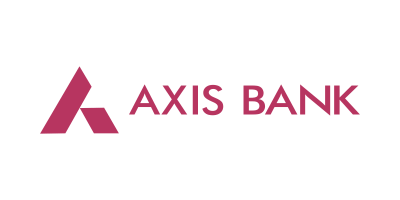
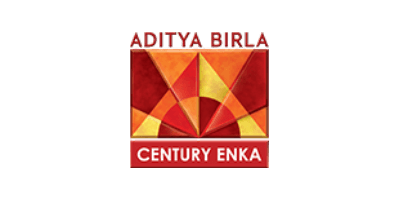
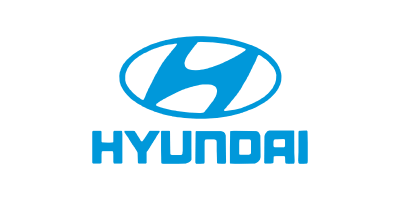




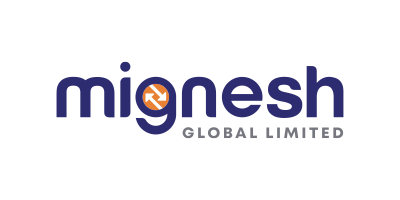
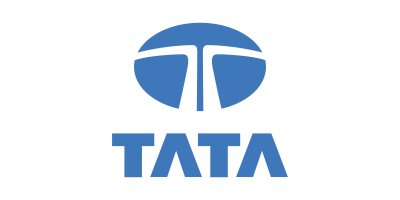
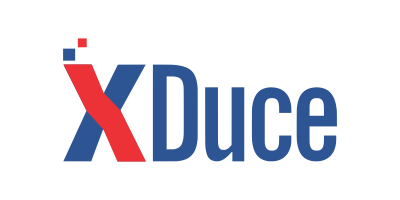
Our clients are as diverse as they are amazing, ranging from startups to established businesses.
Highly recommended
"Even though, the subject NLP coaching is so challenging Janki Madam has taken lot of time and effort to clarify the rudiments and explain in the easiest possible way....all the time very supportive in clarifying our doubts...any one looking for NLP coaching...it will be the best option to train under her supervision."

Highly recommended
"I had a wonderful experience taking the NLP training and workshop under the lights of Mrs. Janki Bhatt. She is highly proficient in the field of NLP and has a very balanced approach on delivering the knowledge base through real life citations and situations."

Highly recommended
"It was a wonderful training experience for me and all my employees. My expectations from the training program was to improve manpower productivity and strengthen their motivation level in their respective areas."

Highly recommended
"A seminar held by Mrs Janki Bhatt on Inspire to Aspire using Neuro linguistic Programming at my office to empower my staff.It was so vividly delivered that everyone was really amazed by the impact that made an influence over them."

Highly recommended
"Content delivery and quality is highly appreciable. The interactive sessions make it easier to understand and implement for our benefits. It's great to be a part of this training session, getting trained by an awesome NLP coach!"

In simple words, employee’s productivity is the output per worker per hour/day/ week/month. For an easy understanding, productivity is measured through generated revenue by employees. If productivity goes up, revenue follows and vice versa, resulting in profit or loss. Not all employees are productive. Their productivity depends on their interest, motivation, and work satisfaction. Productivity can be measured for individual, team, unit and organisation as a whole.
Organisation’s business objectives like profit, volume, customer satisfaction, expansion etc. will largely depend on productive output delivered by each employee working in the organisation. If evaluated regularly, employee productivity will bring unimagined results to the organisation. Employee productivity will enable organisations to control or eliminate extra cost of acquiring new business or manufacturing goods.
There are many factors which impact employee productivity like pay scale, incentive structure, competition, work-life balance, product quality and acceptance, Industry performance, government policies etc. There are factors that affect low employee productivity that are out of your control. But for the factors that you can control, you must analyse the situation and figure out how to resolve the issues. Some of the factors which can be improved to uplift manpower productivity are workload management, rewards & recognition, work culture, clear SOPs, regular training and development initiatives.
There are three most important factors contributing to high employee productivity.
There are structured ways to measure and improve workforce productivity.
Here are further articles you might find
interesting:
Business Coaching
Struggling with business challenges?
 10 min read
10 min read
 18 August, 2025
18 August, 2025
Corporate Training
Discover the top 10 benefits of training employees
 10 min read
10 min read
 05 june, 2025
05 june, 2025
Corporate Training
Personal effectiveness is the foundation for successful careers!
 10 min read
10 min read
 21 April, 2025
21 April, 2025
Corporate Training
Learn the top 10 causes of high employee turnover & tips to reduce it.
 10 min read
10 min read
 03 April, 2025
03 April, 2025
 8 min read
8 min read
 28 march, 2025
28 march, 2025
Business Coaching
Business coaching offers ROI through financial growth, leadership development,
 8 min read
8 min read
 17 march, 2025
17 march, 2025
Business Coaching
Hiring a business coach can accelerate growth
 10 min read
10 min read
 03 march, 2025
03 march, 2025
Corporate Training
You're scrolling through LinkedIn, and for the 20th time,
 10 min read
10 min read
 05 february, 2025
05 february, 2025
Business Coaching
You're scrolling through LinkedIn, and for the 20th time,
 5 min read
5 min read
 16 january, 2025
16 january, 2025
Business Consultancy
Did you know businesses waste up to 26% of their productive hours
 10 min read
10 min read
 07 january, 2025
07 january, 2025
Business Consultancy
At some point, every business owner/entrepreneur faces the question:
 9 min read
9 min read
 02 january, 2025
02 january, 2025
NLP
NLP can improve your negotiation skills by helping you develop empathy
 10 min read
10 min read
 09 December, 2024
09 December, 2024
Business Coaching
A business coach enhances performance through targeted strategies
 10 min read
10 min read
 25 november, 2024
25 november, 2024
Corporate Training
Picture your three best people. Now, think about what it would take to replace them
 10 min read
10 min read
 19 november, 2024
19 november, 2024
Corporate Training
Corporate training is not something that one can show off in boardrooms or on one's LinkedIn profiles.
 10 min read
10 min read
 28 october, 2024
28 october, 2024
Business Coaching
Ah, again, there comes a question: “Do I need a business consultant or a business coach?”
 13 min read
13 min read
 22 october, 2024
22 october, 2024
Business Coaching
Let’s cut to the chase - Starting or running a business is hard!
 7 min read
7 min read
 17 october, 2024
17 october, 2024
Art of Sales
For as long as sales have been around,
 6 min read
6 min read
 06 october, 2024
06 october, 2024
Training Consultancy
Whether you're running an office or leading a team on a project, you need people skills to engage with your team effectively.
 2 min read
2 min read
 24 August, 2023
24 August, 2023
Training Consultancy
Developing Emotional Intelligence within Your Team As a founder, you probably collaborate with several teams.
 3 min read
3 min read
 25 July, 2023
25 July, 2023
Training Consultancy
What comes to mind when you think of a successful entrepreneur? Destroying rivals?
 4 min read
4 min read
 15 July, 2023
15 July, 2023
NLP
NLP is the science of modelling an excellence.
 3 min read
3 min read
 30 December, 2021
30 December, 2021